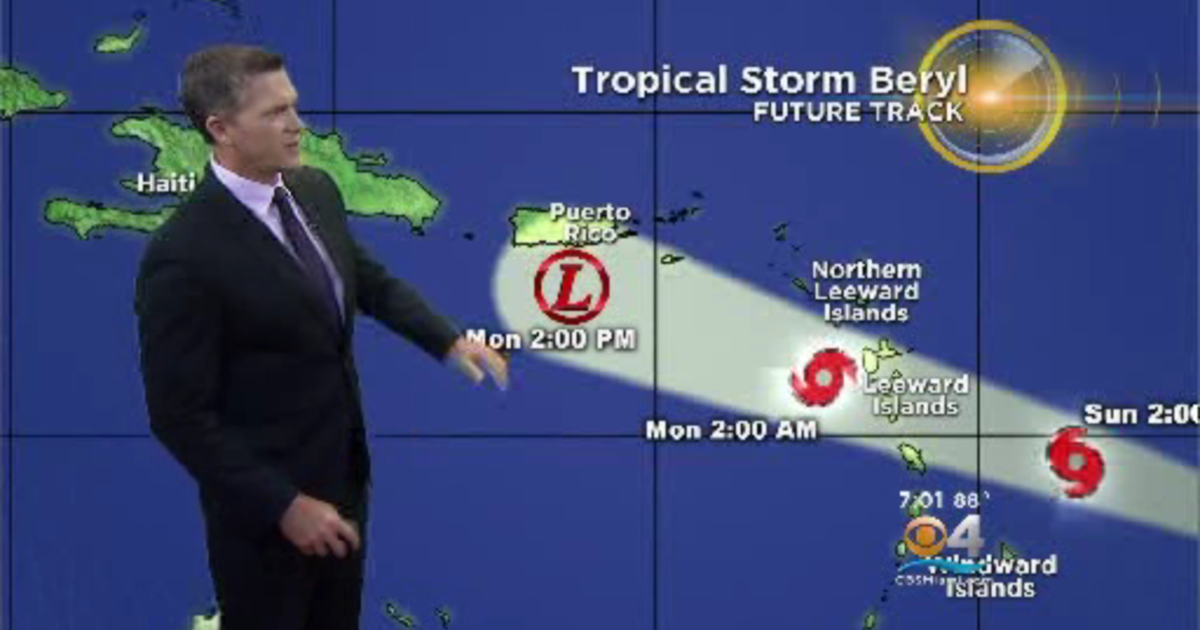Impact of Hurricane Beryl on Jamaica: Hurricane Beryl Jamaica

Hurricane beryl jamaica – Hurricane Beryl, a Category 1 hurricane, made landfall in Jamaica on July 5, 2023, bringing heavy rainfall, strong winds, and flooding to the island.
The hurricane’s path took it across the eastern parishes of Jamaica, including Portland, St. Thomas, and St. Mary. It brought sustained winds of up to 120 kilometers per hour (75 miles per hour), with gusts of up to 150 kilometers per hour (93 miles per hour).
Damage to Infrastructure, Homes, and Businesses
The hurricane caused significant damage to infrastructure, homes, and businesses across Jamaica. The strong winds uprooted trees, damaged power lines, and caused widespread flooding.
In the wake of Hurricane Beryl’s destructive path through Jamaica, the nation looks towards recovery and rebuilding. Amidst the devastation, one beacon of hope emerges in the form of Senator Tim Scott , who has pledged unwavering support to the affected communities.
His dedication to providing aid and ensuring a swift recovery is a testament to his unwavering commitment to those in need, mirroring the resilience of the Jamaican people as they navigate this challenging time.
Many roads and bridges were damaged or destroyed, making it difficult for emergency responders to reach affected areas. Several buildings, including homes, schools, and hospitals, were also damaged or destroyed.
As Hurricane Beryl lashes Jamaica with torrential rain and high winds, it’s crucial to stay informed. For the latest updates on the storm’s progress, check out the latest brandon aiyuk news. Meanwhile, Hurricane Beryl continues to pose a significant threat to the island, and residents are urged to take necessary precautions.
Loss of Life and Injuries
Sadly, Hurricane Beryl also caused loss of life and injuries in Jamaica. The heavy rains and flooding led to landslides and mudslides, which resulted in several deaths.
In addition, the strong winds caused injuries to people who were struck by flying debris or falling trees.
Government and Humanitarian Response

In the face of Hurricane Beryl’s devastation, the Jamaican government swiftly implemented emergency measures to safeguard citizens and minimize damage. These measures included evacuations from vulnerable areas, deployment of security forces for public safety, and establishment of shelters for those displaced by the storm.
Following the hurricane’s impact, the government initiated relief programs to support affected communities. These programs provided financial assistance, food supplies, and temporary housing to those in need. Additionally, the government coordinated with international aid organizations to ensure a comprehensive response to the crisis.
Role of International Aid Organizations
International aid organizations played a crucial role in providing assistance to Jamaica in the aftermath of Hurricane Beryl. These organizations, such as the Red Cross and the United Nations, provided essential supplies, medical aid, and logistical support to affected communities.
The collaboration between the Jamaican government and international aid organizations ensured a coordinated and effective response to the crisis. This collaboration allowed for the efficient distribution of aid and services, maximizing the impact of relief efforts.
Challenges in Coordinating and Delivering Aid
Despite the concerted efforts of the Jamaican government and international aid organizations, there were challenges in coordinating and delivering aid effectively.
- Infrastructure Damage: Hurricane Beryl caused extensive damage to infrastructure, including roads and bridges, making it difficult to reach affected communities and deliver aid.
- Communication Disruptions: The hurricane disrupted communication networks, making it challenging to coordinate relief efforts and provide timely updates to affected populations.
- Resource Constraints: The Jamaican government and international aid organizations faced resource constraints, including limited funding and personnel, which impacted the scale and effectiveness of relief efforts.
Despite these challenges, the Jamaican government and international aid organizations worked diligently to overcome obstacles and ensure that aid reached those who needed it most.
Lessons Learned and Preparedness
:quality(70)/d1hfln2sfez66z.cloudfront.net/11-12-2019/t_423d5e2948964ee2aff5c801c5f08a9b_name_CB725C2ADED4425FB11D26B8BA968321_1.jpg)
Hurricane Beryl’s impact on Jamaica highlighted areas for improvement in disaster preparedness and response. The lessons learned from this event have guided the implementation of significant enhancements to the country’s disaster management system.
Improvements to Disaster Management System, Hurricane beryl jamaica
- Enhanced Early Warning Systems: Upgraded weather monitoring and forecasting capabilities, including the deployment of Doppler radar, have improved the accuracy and timeliness of early warnings.
- Strengthened Communication Networks: Redundant communication systems have been established to ensure reliable information dissemination during emergencies, including satellite phones and community-based radio networks.
- Improved Evacuation Plans: Comprehensive evacuation plans have been developed and regularly updated, identifying safe evacuation routes and designated shelters.
- Enhanced Emergency Response Capacity: The training and equipment of first responders have been enhanced to improve their ability to respond effectively to disasters.
- Community-Based Disaster Risk Reduction: Programs have been implemented to empower communities to identify and mitigate disaster risks, including community disaster preparedness committees and early warning systems.
Importance of Community Engagement and Public Education
Community engagement and public education are crucial for promoting preparedness. Informed communities can take proactive measures to reduce their vulnerability to disasters.
- Public Education Campaigns: Regular public education campaigns are conducted to raise awareness about disaster risks, preparedness measures, and evacuation procedures.
- Community-Based Preparedness Activities: Community-led initiatives, such as disaster preparedness workshops and mock drills, foster a sense of ownership and empower communities to take action.
- Use of Local Knowledge: Local knowledge and traditional practices are incorporated into disaster preparedness plans, ensuring that community-specific vulnerabilities are addressed.